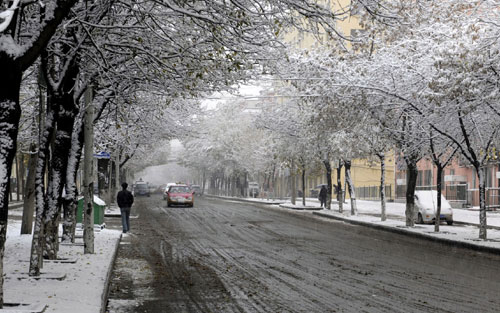Dongbei Opus: Michael Meyer Discusses His Northeastern Chinese Travelogue 'In Manchuria'
From its raw, relentless winds to its barren, icy planes, the tiny northeastern Chinese village known as Wasteland seems more than suited to its name. But when Michael Meyer writes about his sojourn to that frigid locale in In Manchuria: A Village Called Wasteland and the Transformation of Rural China, the award winning travel writer devotes his most evocative imagery to the village’s rugged beauty. He doesn’t quite romanticize this harshly exotic region, but there is a romantic element to the book: Wasteland is the hometown of his wife, Frances. Below, Meyer tells us how that far-flung locale – and its tenacious locals – became his muse.
Many expat reporters have written excellent, nonfiction China travelogues. But most of them focus on southern provinces. Did you feel the genre was lacking a definitive dongbei (northeastern) book?
I was attracted to Wasteland because it’s in what I consider the most beautiful and interesting part of China. Also, I knew that anchoring the book there would allow my research to drift through the surrounding cities and relics, which illuminate the country’s recent history, and its next era – mainly the increased importance of corporate farming, and its regionalism and decentralization.
The northeast is a region apart. In general, the people are bigger, franker and – as many boasted to me – champion storytellers, and exaggerators. After living in a Beijing that was tearing itself down and making itself anew, the thing that most surprised me about dongbei was the ongoing, palpable legacy of its past 100 years, with ruins scattered across its plains like playing pieces in a game called Empire. The Japanese occupation and its aftermath are particularly present. I visited sites where chemical weapons were still being unearthed, walked through former Manchukuo ministerial buildings and Shinto temples, a POW camp that held survivors of the Bataan Death March, and a cemetery sanctioned by Zhou Enlai that held the remains of Japanese settlers.
The book is both macro and micro – the passages about Wasteland’s history fit nicely with anecdotes about your own history with Frances. Was it challenging to find that balance?
I wanted to write a love letter to the northeast – and my family – but for it to resonate with a general audience, the historical context was crucial, and a lot of fun to research.
What was the biggest hurdle that you faced while writing In Manchuria?
I found that it’s much more difficult writing about family than it is about strangers, and much harder to write about a village than it is a city. In a city, and with strangers, nothing is known – or what is known is small compared to what fits into a book. But family, and a village, go on forever. Memories are like the weather – the fourth dimension on a farm. Resentments steep like tea leaves. The wonderful thing about nonfiction, however, is that a book goes through multiple rounds of fact checking, and has compendious source notes. In the end, everyone was satisfied that the “most honest” version of themselves was on the page, even when they were – perhaps – being less than truthful, such as the man who says he slept with an alien.
Will you visit Wasteland again? If so, what part of the trek are you most looking forward to?
I have a toddler son who the village can’t wait to meet, so we’ll visit once the northwest Mistral (wind) dies down and the land thaws out. The book will come out in two versions this autumn, so I’ll deliver copies to Wastelanders then.
In Manchuria: A Village Called Wasteland and the Transformation of Rural China is published by Bloomsbury Press, and is available on Amazon, at The Bookworm and other bookstores.
Photo: China Daily

